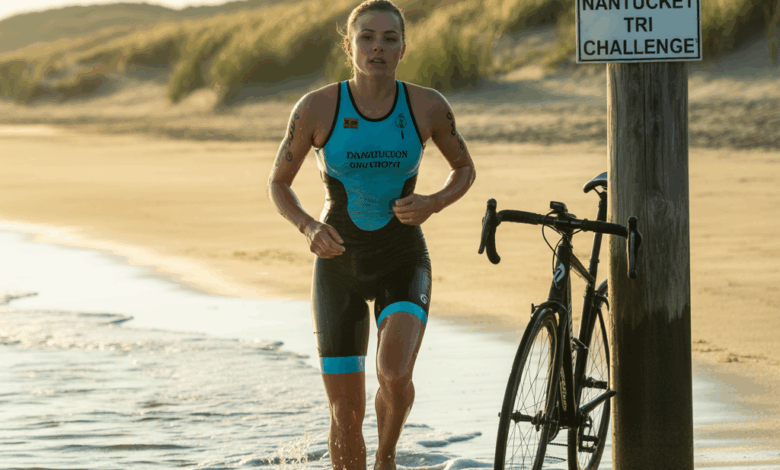Nantucket Triathlon Ultimate Guide: Train, Race, and Recover Like a Pro

Have you ever stood at the edge of the water, heart racing, wondering if your training will carry you through a windy bike leg and a sandy run? If so, this nantucket triathlon ultimate guide is written for you. Whether you’re toeing the line for your first sprint tri or chasing a personal best on Nantucket’s scenic course, these practical tips, workout plans, and race-day strategies will help you show up confident and prepared.
Why the Nantucket Triathlon Is Special
Nantucket’s charm—salt air, historic lighthouses, and rolling coastal roads—also brings unique race conditions: open-water swims with variable currents, exposed bike sections that can be windy, and a run that may include uneven surfaces or sand. Training specifically for these elements is key to a successful race day.
Know the Course
- Open-water swim specifics: possibility of chop, sighting landmarks
- Bike: rolling terrain and exposed stretches where wind matters
- Run: firm and soft surfaces—practice on mixed terrain
Training Plan Essentials for Nantucket
Build your plan around three pillars: swim, bike, run—plus transitions, strength, and recovery. Aim for consistency over intensity; a balanced program beats sporadic hard sessions.
Weekly Structure (Sample)
- Monday: Active recovery + mobility
- Tuesday: Interval bike session + short transition run (brick)
- Wednesday: Technique swim + strength training
- Thursday: Tempo run or hill repeats
- Friday: Easy swim or spin + mobility
- Saturday: Long bike with mixed efforts
- Sunday: Long run or race simulation
Key Workouts
- Open-water swim session: 30–45 minutes focusing on sighting and drafting practice.
- Brick workout: 60-minute bike at race pace + 15–25 minute run off the bike to simulate race feeling.
- Threshold bike set: 3 x 8 minutes at just below FTP with 4-minute recoveries—good for pacing in wind.
- Tempo run: 20–30 minutes at a sustained intensity to build race-day endurance.
Swim, Bike, Run: Practical Tips for Each Discipline
Open-Water Swim
Practice sighting every 6–10 strokes, get comfortable swimming in a group, and rehearse calming techniques for pre-race nerves. If you’re new to wetsuits, train in one so you know fit and buoyancy differences.
Bike
Wind is a big factor on Nantucket. Practice riding in crosswinds and work on aero position comfort. Bring a backup tube, and learn quick roadside fixes. Nutrition on the bike should include electrolyte drinks and easily digestible carbs—test them in training.
Run
Include a few runs on trails or beach paths to emulate race surfaces. Practice pacing off fatigue by doing fast finishes at the end of long runs or after bikes.
Nutrition and Race-Day Fueling
Fueling appropriately can make or break race performance. Use your long training sessions to experiment—never try new foods the morning of the race.
- Pre-race: 2–3 hours before start, aim for 300–400 kcal of easy-to-digest carbs + small protein.
- During race: For sprint/olympic distances, 30–60 grams of carbs per hour depending on effort and duration.
- Hydration: Include electrolytes, especially if wind or sun increases sweat rates.
For more detailed meal plans and timing strategies, check our nutrition guides.
Strength, Mobility, and Injury Prevention
Don’t skip strength training—2 sessions per week focused on hip stability, core strength, and single-leg exercises will improve power and reduce injury risk.
- Sample exercises: single-leg deadlifts, planks with rotation, Bulgarian split squats, glute bridges.
- Mobility: ankle dorsiflexion, thoracic rotation, and hip flexor stretches to support run and bike mechanics.
Race Week and Tapering
Taper smart: reduce volume but maintain short intensity to keep sharpness. Focus on sleep, solid nutrition, and visualizing transitions and pacing. Lay out your gear the night before—wetsuit, goggles, helmet, shoes, race belt, and nutrition. A clear checklist reduces pre-race anxiety.
Nantucket Triathlon Ultimate Guide: Race-Day Strategy
Arrive early, check transition flow, and practice a mock exit to avoid fumbling. Start conservatively in the swim if conditions are rough, pedal smoothly into the wind—don’t overgear—and plan a negative-split run if your training supports it.
Transition Tips
- Set up left-to-right: helmet and sunglasses on the bars, shoes facing out for a quick mount.
- Practice a few timed transitions in training to reduce seconds on race day.
Real-World Example: How Sarah Prepped for Nantucket
Sarah, a busy middle-school teacher, balanced three workouts per week with strength sessions and focused on quality rather than quantity. She added two open-water swims and weekly brick workouts. On race day, she executed calm swim pacing, stayed aero on exposed bike sections, and used short walk breaks at aid stations to control heart rate, finishing 12 minutes faster than her previous triathlon.
Her takeaway: specificity, consistency, and realistic goal-setting beat last-minute panic.
Frequently Asked Questions
1. What should I wear for the Nantucket triathlon swim?
Wetsuits are common if water temps are cool—practice in one before race day. Swim cap and goggles are essentials; consider tinted lenses for bright conditions.
2. How do I train for wind on the bike course?
Include long rides on exposed roads if possible, practice riding in a slightly lower gear to maintain cadence, and use interval training to increase your ability to handle surges from gusts.
3. How many bricks should I include leading up to the race?
Start with one brick per week 6–8 weeks out, increasing specificity as the race approaches. Include a longer brick (race-distance or close) 2–3 weeks before race day to simulate fatigue.
Conclusion — Take the Next Step
This Nantucket triathlon ultimate guide gives you the blueprint: smart swim practice, wind-ready bike strategy, run-specific work, strength training, and race-day logistics. Now it’s your turn—pick a training block, test a fueling plan, and simulate a race with a weekend brick. For ready-made plans, visit our workout routines and keep your recovery on point with our wellness tips.
Ready to commit? Start today with a short sighting swim or a 30-minute bike tempo—small consistent steps lead to big race-day results. Sign up for updates or share this guide with your training partner to stay accountable.





